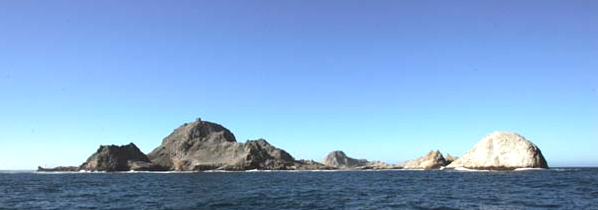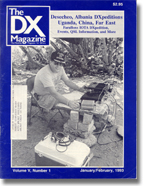
In September, 1992, I visited the Farallon Islands, about 25 miles west of San Francisco, as a follow-up to the 1990 Rocas Alijos (Baja) expedition. During those years there was a very high avian mortality on the eastern Pacific islands, including Rocas Alijos and the Farallon Islands. Apparently the epidemic was caused by the spread of botulism, for which the vector was the dermestid beetle. Beetle tests were found among the bird carcases on Rocas Alijos. Accordingly, I proposed to the Point Reyes Bird Observatory that an examination of the Farallon Islands for possible evidence of dermestids, and the plan was approved by the PRBO Director Dan Evans and the resident naturalist Peter Pyle.
In September, 1992, my son Randy (who was conducting a separately approved project relating to salamaders on the Farallons) and I took the R/V Cordell Explorer to the SE Farallon Island, and with permission of Evans and Pyle we spent several days on the island conducting the two research projects.
During this time, I was given permission by Pyle and Evans to bring my ham radio on the island and operate from the lighthouse. This operation was done during one 24-hour period, and did not interfere with either the scientific program or the community on the island. Subsequently, a description of the operation was published in DX Magazine (Vol. 5, No. 1, p.24, 1993). The entire article is available here (HTML, Word).

The radio operation was specifically motivated to provide public information about the Farallon Islands and to generate support of the PRBO. As a result of the operation, the PRBO acquired about ten new paying members and donations of about $500. A longer operation was envisioned that would log thousands of contacts, representing a potential for thousands of dollars for the refuge.
Followng publication of the report, staff at the the San Francisco Bay Wildlife Refuge objected to the permissions given by Pyle and Evans. They defined the radio operation as a "media event," which is not permitted on the Farallons. The Refuge staff, without contacting me, banned me from further research work at the Farallons and refused any further discussions about amateur radio operations.
It is my opinion that the hypersensitivity to visitors to the Farallons, and amateur radio operations in particular, is unjustified. It was clear in 1993 that the Refuge staff simply did not understand the nature and purpose of the radio operations, and the benefits its brings to the host. Any amateur radio operation would be done from the lighthouse, which is accessed by a paved walkway from the house. It should also be noted that the expenses of radio operations are borne by the amateurs themselves, which means the revenue comes to the refuge with zero overhead. The Farallons are host to many other visitors, from the Coast Guard, from various organizations, and students.
I have worked for 25+ years to help protect and preserve the marine environment, including the creation of the Cordell Bank National Marine Sanctuary (including publication of the book Ecology of an Underwater Island), adding the Pt. Sur/Schmieder Bank portions of the Monterey Bay National Marine Sanctuary, the first biological collections from subtidal North Farallons, discovery of a subsurface tunnel under the Island of St. James (N. Farallon), scientific expeditions to Rocas Alijos (Baja), Easter Island, Peter I Island, Heard Island, San Felix Island, Roqueta Island, Guadalupe Island, and others. I have written 8 books and dozens of general articles resulting from these expeditions, and have made hundreds of presentations and interviews.
It is my strong belief that amateur radio operations are a legitimate and effective way to enhance efforts such as these to preserve and appropriately manage islandic resources, and that radio operations should be welcomed by wildlife managers. The 2005 attempt to gain access to the Farallons by legislation (HR 298) is an expression of the frustration the amateur radio community who feel they are being unfairly characterized and denied the opportunity to participate in activities appropriate to the resource. Planning documents at that time show the intention to "Prohibit ham radio operators and other uses that do not promote the Refuge's mission", in spite of abundant evidence that the operations not only benefit the Refuge, but are partially motivated for such benefit. However, in 2006, a second ham radio operation was permitted and carried out, during which the Refuge managers placed a nearly impossible burden on the operation, including unreasonable financial and logistical donations to the Refuge. The result is that currently amateur radio operations are de facto prohibited. This is most regrettable because the Refuge is the ultimate loser of the benefits that these operations can bring.